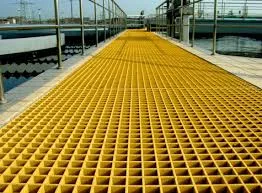
-
 Afrikaans
Afrikaans -
 Albanian
Albanian -
 Amharic
Amharic -
 Arabic
Arabic -
 Armenian
Armenian -
 Azerbaijani
Azerbaijani -
 Basque
Basque -
 Belarusian
Belarusian -
 Bengali
Bengali -
 Bosnian
Bosnian -
 Bulgarian
Bulgarian -
 Catalan
Catalan -
 Cebuano
Cebuano -
 China
China -
 China (Taiwan)
China (Taiwan) -
 Corsican
Corsican -
 Croatian
Croatian -
 Czech
Czech -
 Danish
Danish -
 Dutch
Dutch -
 English
English -
 Esperanto
Esperanto -
 Estonian
Estonian -
 Finnish
Finnish -
 French
French -
 Frisian
Frisian -
 Galician
Galician -
 Georgian
Georgian -
 German
German -
 Greek
Greek -
 Gujarati
Gujarati -
 Haitian Creole
Haitian Creole -
 hausa
hausa -
 hawaiian
hawaiian -
 Hebrew
Hebrew -
 Hindi
Hindi -
 Miao
Miao -
 Hungarian
Hungarian -
 Icelandic
Icelandic -
 igbo
igbo -
 Indonesian
Indonesian -
 irish
irish -
 Italian
Italian -
 Japanese
Japanese -
 Javanese
Javanese -
 Kannada
Kannada -
 kazakh
kazakh -
 Khmer
Khmer -
 Rwandese
Rwandese -
 Korean
Korean -
 Kurdish
Kurdish -
 Kyrgyz
Kyrgyz -
 Lao
Lao -
 Latin
Latin -
 Latvian
Latvian -
 Lithuanian
Lithuanian -
 Luxembourgish
Luxembourgish -
 Macedonian
Macedonian -
 Malgashi
Malgashi -
 Malay
Malay -
 Malayalam
Malayalam -
 Maltese
Maltese -
 Maori
Maori -
 Marathi
Marathi -
 Mongolian
Mongolian -
 Myanmar
Myanmar -
 Nepali
Nepali -
 Norwegian
Norwegian -
 Norwegian
Norwegian -
 Occitan
Occitan -
 Pashto
Pashto -
 Persian
Persian -
 Polish
Polish -
 Portuguese
Portuguese -
 Punjabi
Punjabi -
 Romanian
Romanian -
 Russian
Russian -
 Samoan
Samoan -
 Scottish Gaelic
Scottish Gaelic -
 Serbian
Serbian -
 Sesotho
Sesotho -
 Shona
Shona -
 Sindhi
Sindhi -
 Sinhala
Sinhala -
 Slovak
Slovak -
 Slovenian
Slovenian -
 Somali
Somali -
 Spanish
Spanish -
 Sundanese
Sundanese -
 Swahili
Swahili -
 Swedish
Swedish -
 Tagalog
Tagalog -
 Tajik
Tajik -
 Tamil
Tamil -
 Tatar
Tatar -
 Telugu
Telugu -
 Thai
Thai -
 Turkish
Turkish -
 Turkmen
Turkmen -
 Ukrainian
Ukrainian -
 Urdu
Urdu -
 Uighur
Uighur -
 Uzbek
Uzbek -
 Vietnamese
Vietnamese -
 Welsh
Welsh -
 Bantu
Bantu -
 Yiddish
Yiddish -
 Yoruba
Yoruba -
 Zulu
Zulu
reinforced plastic pipe
Reinforced Plastic Pipe A Modern Solution for Infrastructure
In recent years, reinforced plastic pipes have gained immense popularity in various industries due to their unique combination of durability, lightweight properties, and resistance to corrosion. Traditionally, pipes made from materials such as metal or concrete have dominated the market; however, the advent of reinforced plastic has introduced a modern solution that addresses many of the limitations posed by conventional materials.
Reinforced plastic pipes are usually composed of a composite material that includes thermoplastic or thermosetting resins in combination with reinforcement materials such as glass fibers. This combination results in a sturdy yet lightweight product that is easier to handle and install compared to traditional alternatives. The reinforcement significantly enhances the tensile strength and impact resistance of the pipe, making it suitable for high-pressure applications, which are common in water distribution, sewage systems, and chemical processing.
One of the primary advantages of reinforced plastic pipes is their exceptional resistance to corrosion
. Unlike metal pipes, which can easily rust and degrade when exposed to various environmental factors, reinforced plastic maintains its integrity over time. This characteristic makes them ideal for use in harsh environments, including wastewater management and chemical transportation, where exposure to corrosive substances is inevitable. Additionally, these pipes are also resistant to scaling and fouling, ensuring longevity and reducing maintenance costs.reinforced plastic pipe

Another significant benefit of reinforced plastic pipes is their versatility. They can be manufactured in various diameters and lengths, allowing for customization to meet specific project requirements. The lightweight nature of the material not only reduces transportation costs but also makes installation quicker and more efficient, as less manpower and equipment are required.
Moreover, reinforced plastic pipes contribute to sustainability efforts. Their extended lifespan and resistance to degradation mean fewer replacements are needed over time, thus reducing waste. Furthermore, many manufacturers are now focusing on using recycled materials in the production of these pipes, aligning with environmental goals and reducing the carbon footprint associated with pipe manufacturing.
The increasing demand for reinforced plastic pipes across sectors such as construction, agriculture, and infrastructure indicates a significant shift towards embracing advanced materials. As we continue to tackle the challenges posed by aging infrastructure and environmental concerns, reinforced plastic pipes emerge as a reliable and innovative solution that promises to reshape the way we approach piping systems for years to come.









